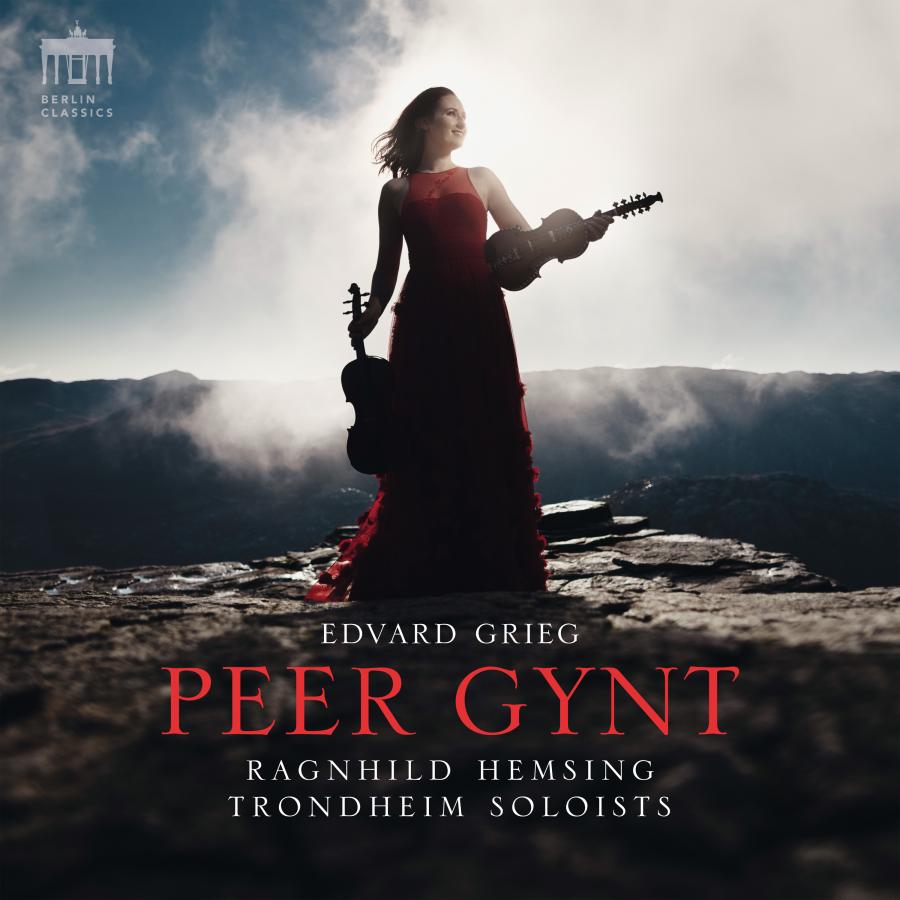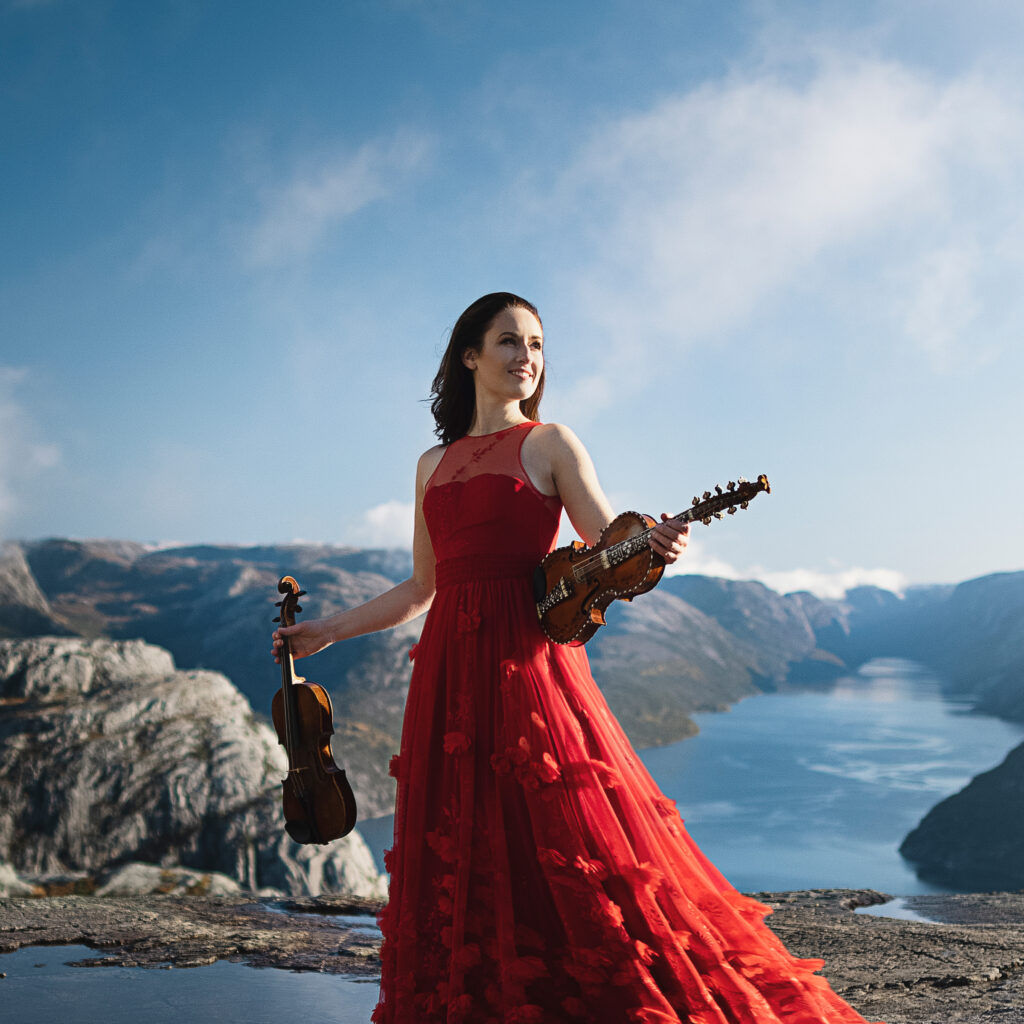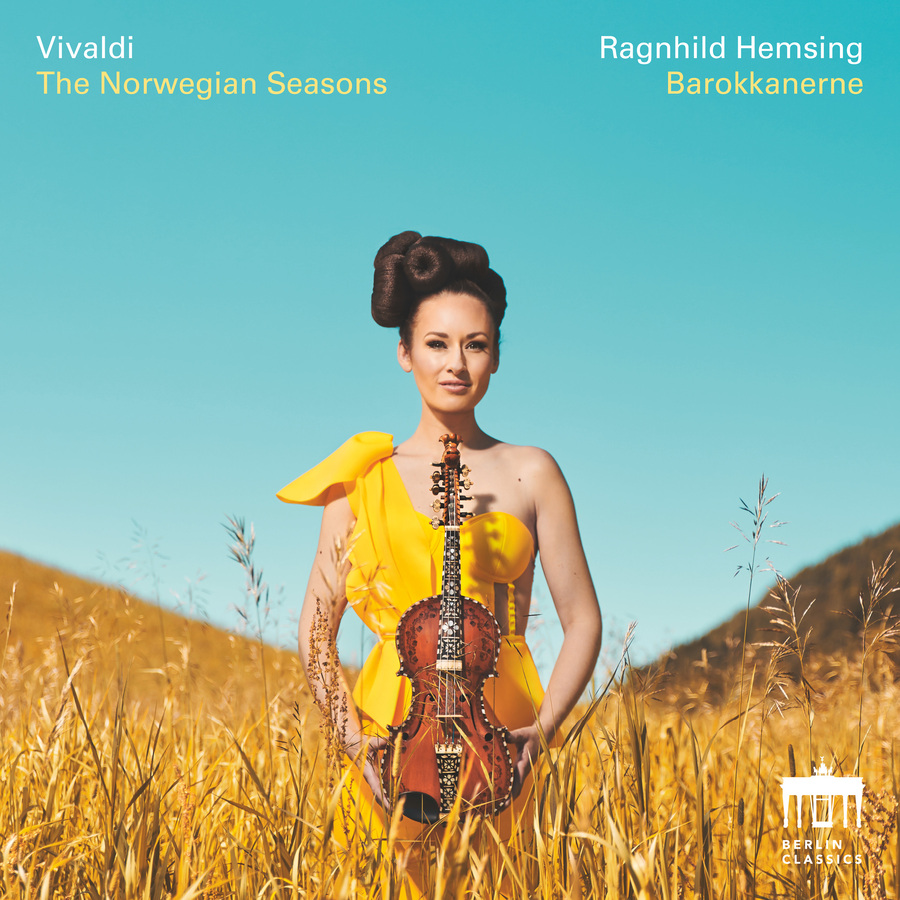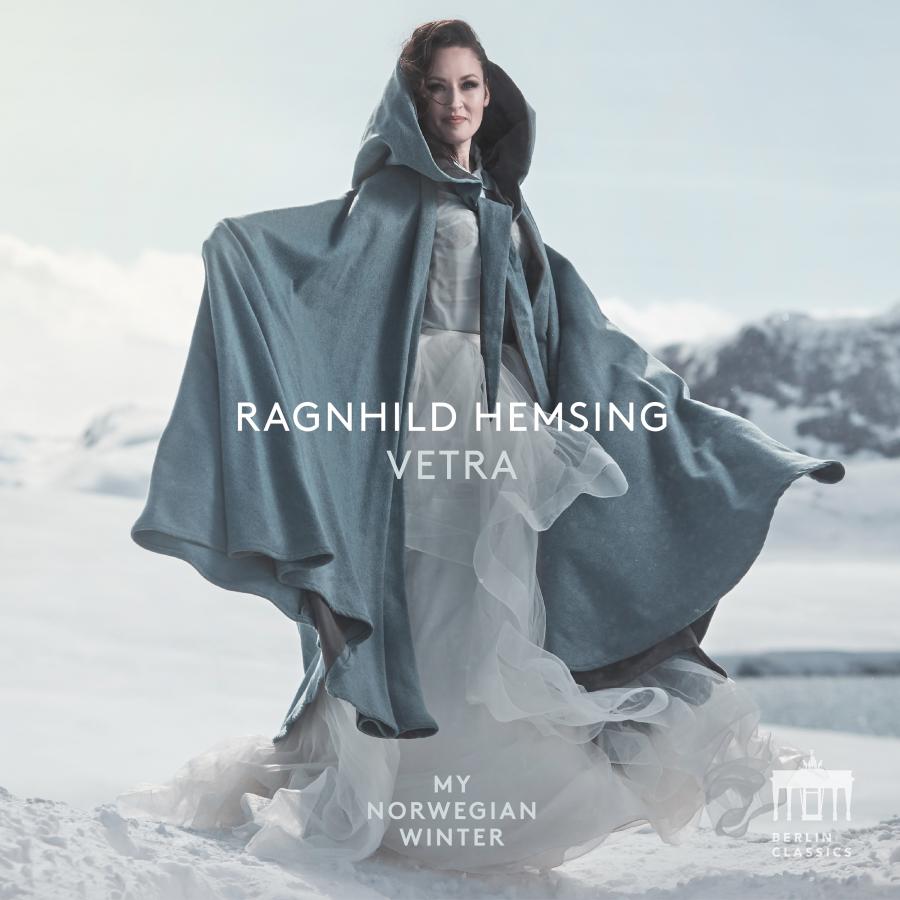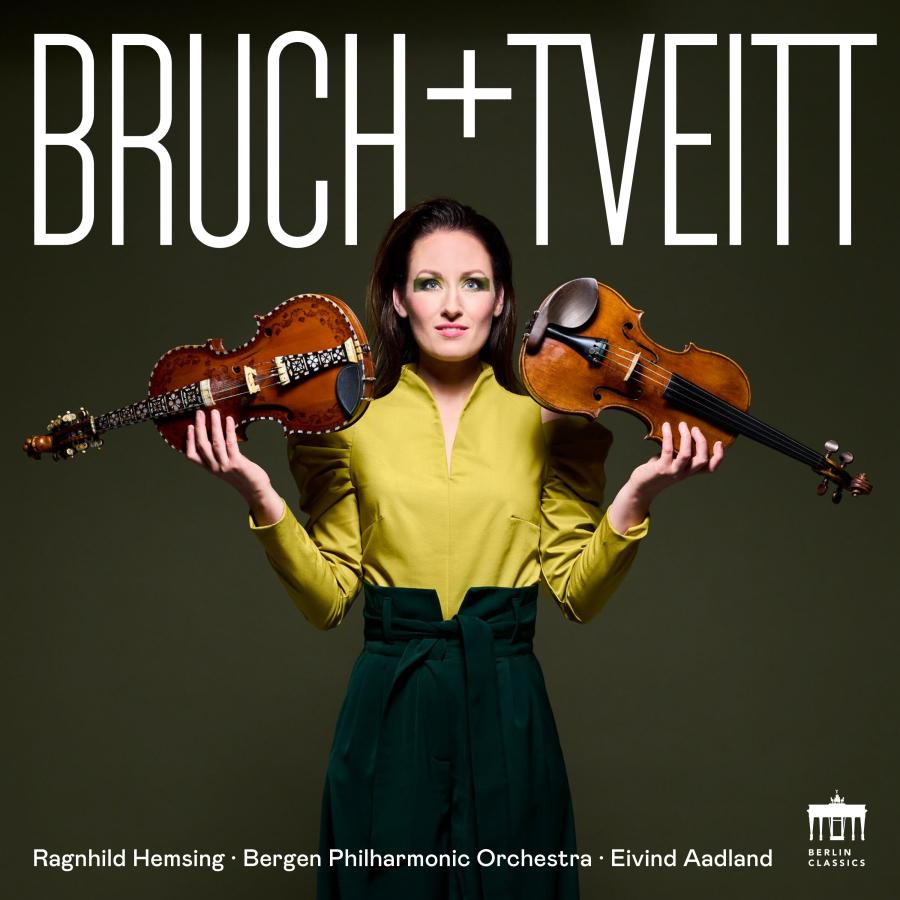The spirit of adventure, braggadocio and tall stories … for her second album on the Berlin Classics label, the Norwegian violinist and Hardanger fiddler Ragnhild Hemsing has chosen to focus on one of Norway’s best known and most legendary characters: Peer Gynt. Although her solo instruments are not part of the original orchestra formation, she chose various sections of the incidental music to the stage play of Peer Gynt op. 23 and had them arranged for her Hardanger fiddle and the violin with string orchestra accompaniment – thereby creating a link to the traditional story of Peer Gynt in the context of Norwegian folk music.
Ragnhild Hemsing had long wished to arrange the music to Peer Gynt for the Hardanger fiddle: “I thought that sections of the music were perfectly suited to the Hardanger fiddle in combination with a solo violin and string orchestra. That said, I wanted to delve deeper into the material, to make it fully clear that folk music and the Hardanger fiddle were the source of inspiration for it.” The fact that Grieg was indeed influenced by both Norwegian folk music and the traditional Hardanger fiddle when composing this music comes out especially clearly in the title “Morgenstemning” (morning mood): The first notes of the work mirror exactly the Hardanger fiddle’s sympathetic strings: A F♯ E D E F♯.
Peer Gynt was not originally conceived for the stage, but as a dramatic poem by Norway’s national poet Henrik Ibsen. It tells the tale of the eponymous protagonist, who leaves his homeland in search of love and adventure. After many years of living in the wild and travelling the world, he returns to Norway, a broken old man – where his beloved Solveig greets him with open arms and forgives him his misdemeanours. Written in 1867, Ibsen was addressing the romantic nationalism in Norway at the time. He wrote a stage version of the story some years later at the behest of the director of the theatre in Christiania (now Oslo). Edvard Grieg was commissioned to write the incidental music for it, a task which he struggled with. In 1876, when the stage music was finally premiered, it was a huge success in Norway; however, Grieg doubted that it would enjoy the same success outside his homeland and he therefore published two shorter Peer Gynt Suites in 1888 and 1893. They went on to become his most popular works worldwide.
On her new album, Ragnhild Hemsing has brought together the Peer Gynt story with her Hardanger fiddle and has also integrated a further aspect of folk music into the mix: improvisation. “Folk music is part of my roots and so it belongs quite naturally to my music. We did not notate it. When improvising I reflect the freedom that I feel when making music, and the tradition that I wish to integrate into the classical genre.” As a result, Ragnhild Hemsing’s music and her re-interpretation of Grieg’s work depicts Peer Gynt’s life: in his longing for freedom and new horizons he discovers his bond with his homeland and its traditions. Ultimately he reflects on his origins and returns to his home – and yet he has been influenced by the impression he has gathered along the course of his journey through the world.
Ragnhild Hemsing is accompanied on her second album by the Trondheim Soloists, an ensemble with which she has already enjoyed a long and fruitful collaboration. The arrangements were written – like those on Hemsing’s first album Røta – by Tormod Tvete Vik. “The Peer Gynt Suites can now be heard in a new guise and with a new sound. A collective, exciting and rewarding exploratory process” as the musician underlines.



